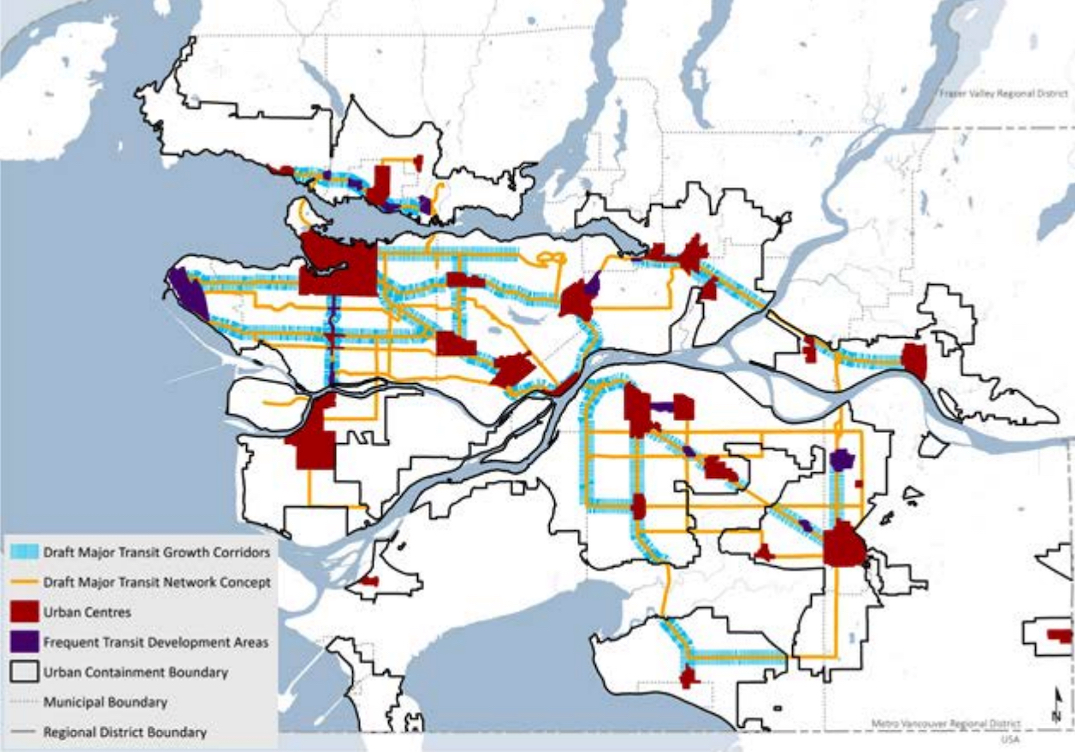New legislation to allow BC government to buy more land around SkyTrain for housing

Forthcoming legislation changes will provide the provincial government with a new tool to build more transit-oriented development with a public benefit purpose.
A new bill tabled by BC minister of transportation and infrastructure Rob Fleming today will provide BC Transportation Financing Authority with the legal ability to acquire land next to public transit hubs — SkyTrain stations and bus exchanges — to build more housing and community benefits.
- You might also like:
- TransLink considering becoming a real estate developer for new revenue
- Massive second phase redevelopment proposed for Marine Gateway
- 21 huge developments near SkyTrain shaping Metro Vancouver's future (RENDERINGS)
- City of Vancouver's proposed Broadway Plan creates a second city centre
- Surrey proposing 100,000 additional residents for Fleetwood's SkyTrain station areas
- Transit-oriented housing a key priority for Metro Vancouver's new long-term plan
The housing would be part of mixed-use developments, along with community amenities and benefits such as childcare, retail, schools, healthcare centres, educational facilities, public gathering spaces, and recreation centres.
This would in effect allow housing and community amenities to be built as an integral part of the public transit system.
Such integrated developments are currently not permitted, as the financing authority is only able to acquire and expropriate the required land to build transportation projects — not additional property to build transit-oriented development. The provincial government says existing policies have made it difficult to shape growth around stations, increase housing density, and help create complete, connected communities near public transit.
“Public transit isn’t just about getting people from A to B, it’s also about building greener and more liveable communities,” said Fleming. “We will increase the level of affordable housing and services that are integrated into our significant investments in transit.”

Exterior of Marine Gateway and SkyTrain Marine Drive Station. (Marine Gateway/Perkins & Will Vancouver)
The provincial government says the policy changes enabling more land acquisition powers for BC Transportation Financing Authority will create more compact, livable, and convenient communities, with retail, services, and community amenities located in close proximity to housing and major public transit services.
According to the provincial government, transit-oriented developments generally have a radius of 800-metre beyond the public transit hubs, which is the short distance deemed to be generally walkable.
The policy will help improve housing affordability and reduce emissions by both adding density and increasing public transit ridership.
The provincial government cites PCI Developments’ 2015-built Marine Gateway mixed-use development of housing, retail, restaurants, services, and a Cineplex theatre next to SkyTrain Marine Drive Station in South Vancouver. This single project increased the station’s ridership by 35%.
The provincial government already has various Supportive Policy Agreements with TransLink, the City of Vancouver, the City of Surrey, and the City of Langley, which require the municipal governments to create new area plans that densify the areas around future SkyTrain investments — Millennium Line extension to Arbutus and Expo Line extension to Langley — to enable more housing and employment uses.

Land use in Fleetwood Plan around the Surrey-Langley SkyTrain stations. (City of Surrey)

Draft land uses and heights of the Broadway Plan, March 2022. (City of Vancouver)

Concept sketch of the future Central Broadway skyline as the result of the Broadway Plan. (City of Vancouver)
Surrey’s Fleetwood Plan calls for an additional 100,000 residents and 15,000 jobs near the three future SkyTrain stations in the area, while Vancouver’s Broadway Plan envisions adding up to 50,000 residents and 42,000 jobs around six future SkyTrain stations.
The forthcoming city-wide Vancouver Plan also broadly calls for more transit-oriented development across the city near existing and future major SkyTrain stations, and major bus route corridors.
Metro Vancouver Regional District’s upcoming Metro 2050 Plan will also open up the possibility of transit-oriented, mixed-use developments in industrial areas next to SkyTrain stations. This ability would introduce affordable rental housing above industrial and commercial uses, effectively protecting industrial designations and employment spaces.
For years, TransLink has also been contemplating a robust real estate division that pursues the same objectives of acquiring transit-oriented development sites for housing, while also generating added ridership and a new revenue source.

Metro Vancouver’s frequent transit corridors for urban growth, Metro 2050. (Metro Vancouver Regional District)
- You might also like:
- TransLink considering becoming a real estate developer for new revenue
- Massive second phase redevelopment proposed for Marine Gateway
- 21 huge developments near SkyTrain shaping Metro Vancouver's future (RENDERINGS)
- City of Vancouver's proposed Broadway Plan creates a second city centre
- Surrey proposing 100,000 additional residents for Fleetwood's SkyTrain station areas
- Transit-oriented housing a key priority for Metro Vancouver's new long-term plan

